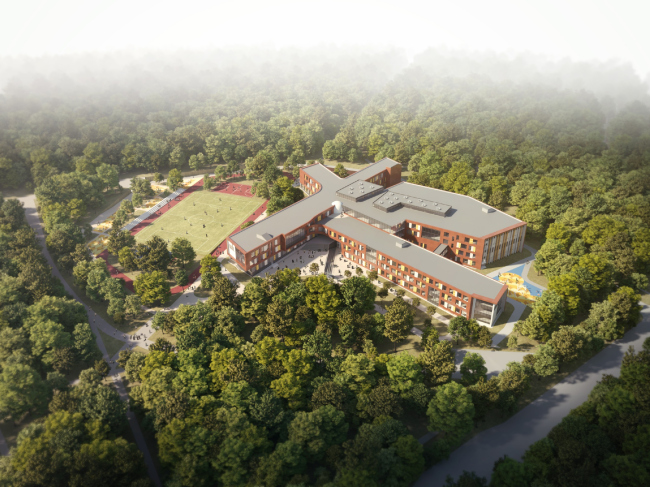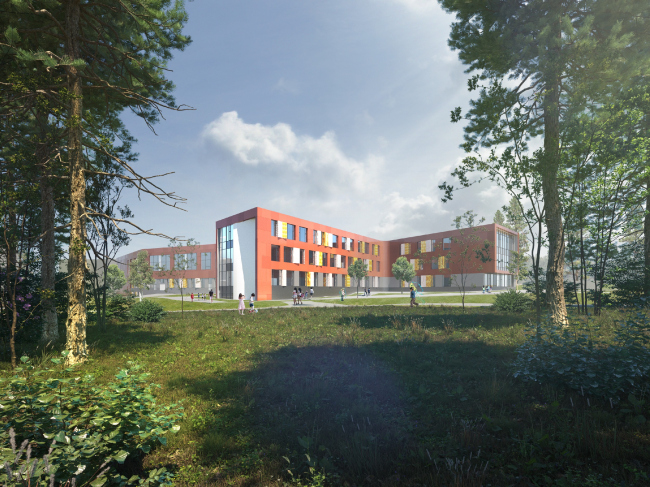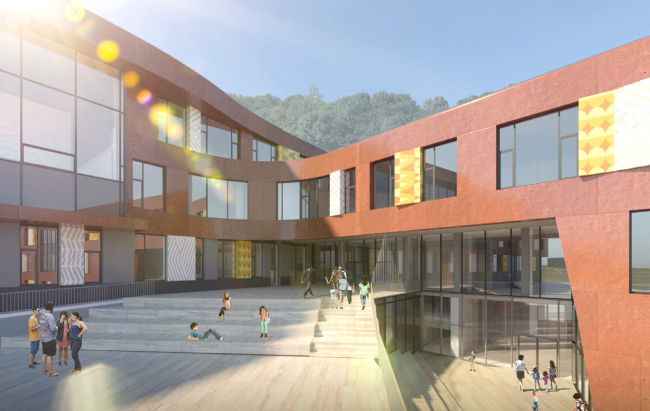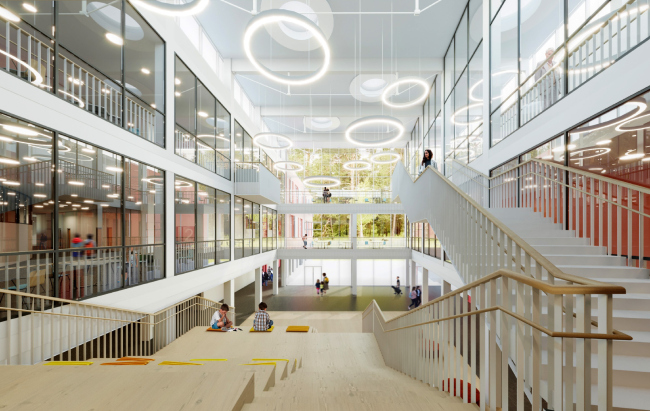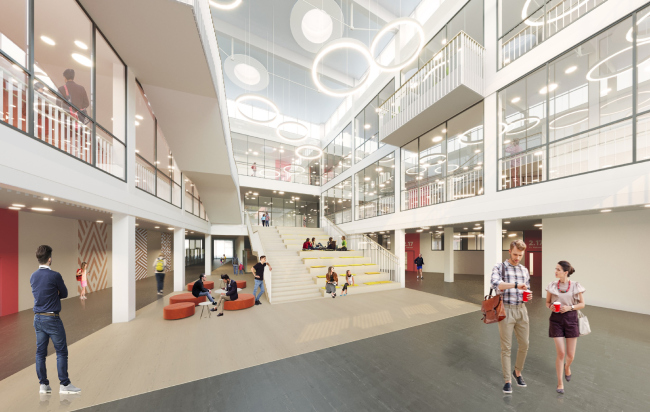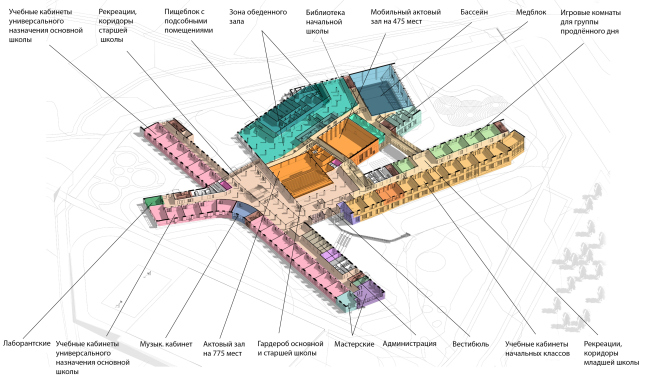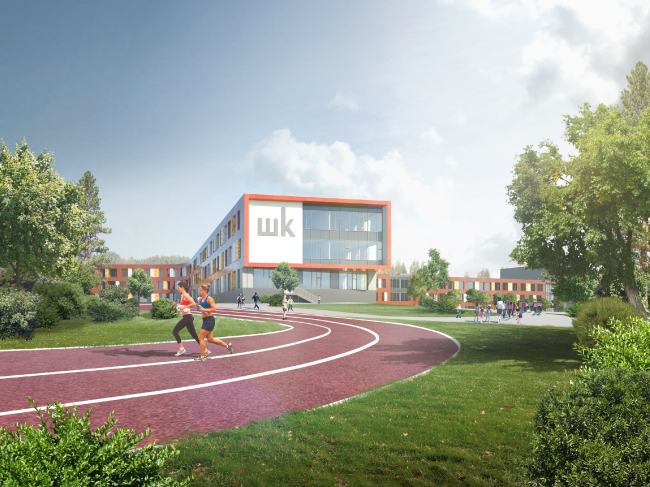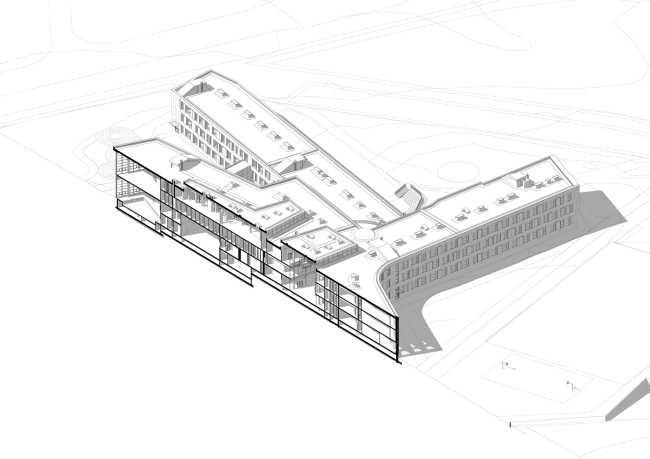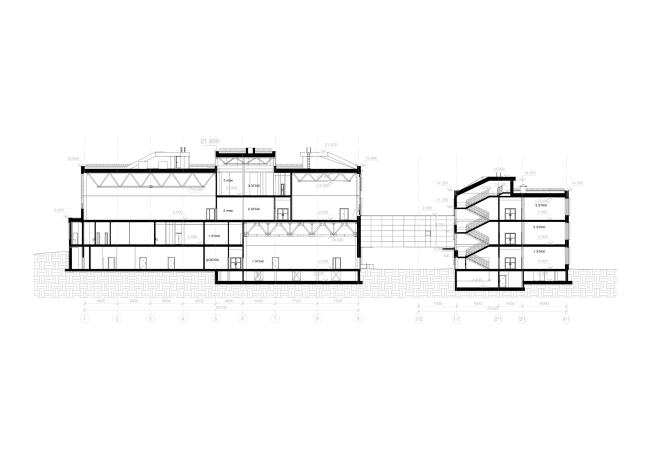|
Published on Archi.ru (https://archi.ru) |
|
| 15.06.2020 | |
|
Part of the Whole |
|
|
Alla Pavlikova |
|
| Architect: | |
| Alexander Asadov | |
| Andrey Asadov | |
| Studio: | |
| ASADOV architects | |
|
On June 5, the winners of Moscow Architectural Award were announced. The winners list includes the project of a school in Troitsk for 2,100 students, with its own astronomy dome, IT testing ground, museum, and a greenhouse on the roof. According to Moscow Architectural Award, the Troitsk school became the best project of an educational complex 2019. The building features all the main innovative trends of the recent years – architectural, technological, and, of course, educational. For the authors of the project, this became a unique opportunity to create an environment that brings up and forms a new generation of people. The school for 2,100 students in Troitsk.Copyright: © ASADOV ArchitectsThe Asadov team did not design the school building from the very start in this case. The project had a long and complicated history. Building a new school in Troitsk was long overdue. The town has a population of 60 thousand people with only eight schools in it. Already in the 2000’s all the schools were filled to capacity. The situation grew even worse after Troitsk officially became a part of Moscow in 2012. Many times a question of introducing a second shift was raised. The municipality tried to solve the problem by expanding the existing educational facilities and building new annexes on their grounds – which, however, did not remedy the situation. It is obvious that, with constant growth of the population and active new housing construction, the deficit of student places in this city is only bound to grow. This was the background that in 2017 gave rise to a proposal to build one more school, yet really capacious. The idea looked like a cure-all, if it was not for the location of the land site that the city allotted for the construction – in the Troitsk forest that occupied the whole east side of the town. According to the master plan, part of the forest, about 15 hectares, will be used for road construction, a school with a stadium, and a kindergarten. The conflict was predictable: the local residents rose to defend the green area. The new school was scheduled to have opened already this year. However, the process got bogged down. The public hearings, protests by environmental activists, and the search for alternative locations proved ineffective. Ultimately, it turned out that the city did not have any extra land resources to spare, but the school still had to be built. It was at that stage that Akademproekt invited ASADOV Architects to take part in the project, offering them to solve the puzzle: a green area, the local residents’ concern, colossal capacity of the intended school building, and rigorous restrictions of the legal character, because the school was going to be a publicly owned one, and special technical conditions were improbable. The Troitsk forest occupies the entire piece of land between the Oktyabrsky Avenue, Botakovsky Field, and the village of Puchkovo. The land site allotted for the construction of the school building, about 5 hectares, is situated in the forest land at the end of the Oktyabrsky Avenue. This is virtually the center of the city with dense housing construction. This part of the park has neither spruce nor century-old trees, which also played in favor of choosing this place. On one side, the land site is delineated by a paved pedestrian trail and a ravine; on the other – by garages that are supposed to give way to the access driveway leading to the complex from the Oktyabrsky Avenue. The school for 2,100 students in Troitsk. The master planCopyright: © ASADOV ArchitectsThe floor plan of the building is the result of painstaking work with a whole number of restrictions that are generally imposed on educational facilities. The “star” shape, as the authors of the project describe it, one with the public nucleus and the academic blocks running away from it, allowed them not only to meet all the restrictions but also conveniently arrange all of the functions inside. The school for 2,100 students in Troitsk. Top view from the side of the Oktyabrsky AvenueCopyright: © ASADOV Architects“In spite of the tremendous size – the overall area is more than 30 thousand square meters – we tried to create spaces that would still be children-friendly – Andrey Asadov shared – In order to achieve that, we divided the school volume into several individual blocks, at the same time forming semi-closed little yards overlooking the park.” What the architects ultimately ended up getting was a sprawling and dispersed composition: four wings of the academic facilities with five little green yards between them. Each one is looking in its own direction and is visually isolated from the rest of the school. The height of the building is three floors. The fourth only appears because of the height difference. Breaking the building down into several parts, the architects achieved fractured perception: from any vantage point, we will only be able to see a part of the whole. The school for 2,100 students in Troitsk. The academic blocks form small semi-closed yardsCopyright: © ASADOV ArchitectsThe central entrance to the building is situated at the joint or the junior and the senior high schools. At the same time, due to one-floor height difference, their entrance groups with a lobbies and locker rooms are situated at different levels: lower for the junior high school, and higher for the senior high. The wings of the academic units are of different length, but the authors applied as much effort as they could to make sure that the environment does not produce the rank-and-file “corridor-and-classroom” impression. First of all, this is achieved due to stained glass windows that provide both natural light and connection between the interior and the world outside. In some cases, the stained glass windows occupy most of the walls; they also appear at the side ends of the beams. This way, the forest becomes part of the school, penetrating into the building image- and emotion-wise. The school for 2,100 students in Troitsk. The entrance groups to the senior high school and the junior high school are situated at different levelsCopyright: © ASADOV ArchitectsThe idea of being at one with the surroundings reaches its climax in the multi-height atrium where the school buildings intersect. In order to comply with the fire safety regulations, the architects also surrounded the atrium with stained glass windows. The floors are joined by a broad staircase that is turned into an amphitheater. The natural light penetrates here through the glass wall opposite the amphitheater. Sitting on its stairs, the students will watch, like on a giant screen, the ever-changing picture of the forest. In the school on the Sovetskaya Street in the town of Domodedovo, which was also designed by ASADOV Architects in collaboration with Akademproekt, and opened last fall, in September 2019, the architects were already able to realize the idea of an atrium combined with an amphitheater, despite the rigorous square footage restrictions. The Domodedovo school is quite small, for just 275 students, and the amphitheater turned out to be the most popular place in it. Therefore, in the new project, which, unlike the Domodedovo school, boasts a tremendous size, the architects paid special attention to the atrium – it became the main communication nucleus of the complex. The school for 2,100 students in Troitsk. The amphitheater in the atriumCopyright: © ASADOV ArchitectsThe school for 2,100 students in Troitsk. The multi-height atriumCopyright: © ASADOV ArchitectsThe junior school unit will include 32 classrooms for 25 students each. The main block is designed for 1300 students. All the classrooms, both in junior and senior high schools, are situated along the eastern and southern facades in order to provide as much natural light as possible. The north side is occupied by the public block. It includes two gyms and two auditoriums (for 475 and 775 spectators) – one for the little ones and one for the senior high school students – as well as a cafeteria, a library, and a 25-meter swimming pool. Out of class, it will be open not only to students, but to everyone. For this, from the Oktyabrsky Avenue, an independent entrance is provided. The school for 2,100 students in Troitsk. The functional layoutCopyright: © ASADOV ArchitectsThe space between the school and the sports nucleus is occupied by a glass overpass – this solution will allow the little ones to significantly shortcut their way to the public part of the building. In order to make sure that the first-graders do not have to climb up and down the stairs, all the necessary premises are placed on the first floor – from classrooms and game rooms to the gym and the first aid office. 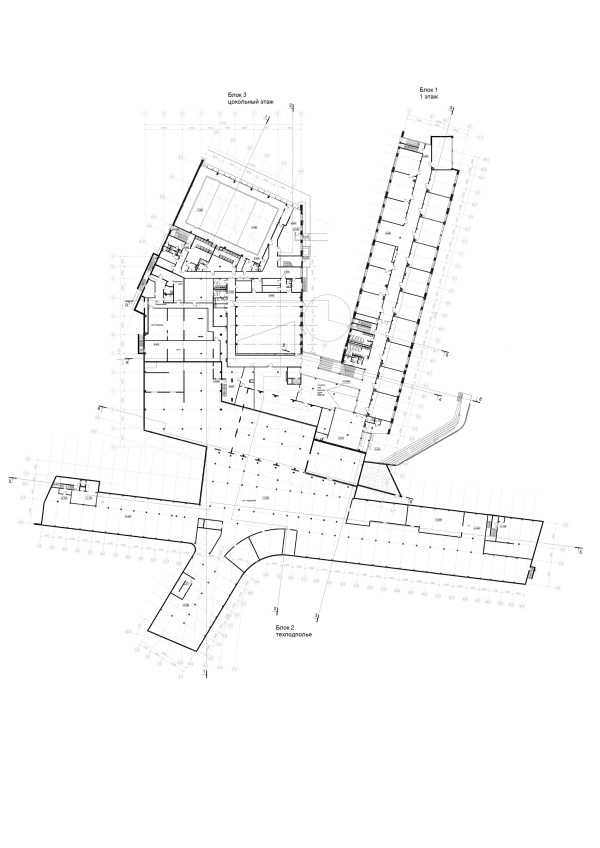 The school for 2,100 students in Troitsk. Plan of the 1st floorCopyright: © ASADOV Architects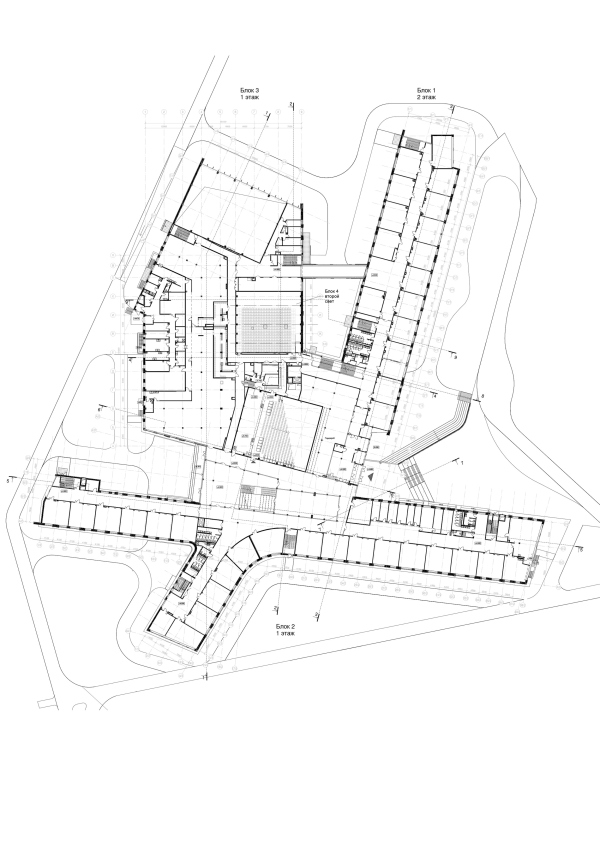 The school for 2,100 students in Troitsk. Plan of the 2nd floorCopyright: © ASADOV Architects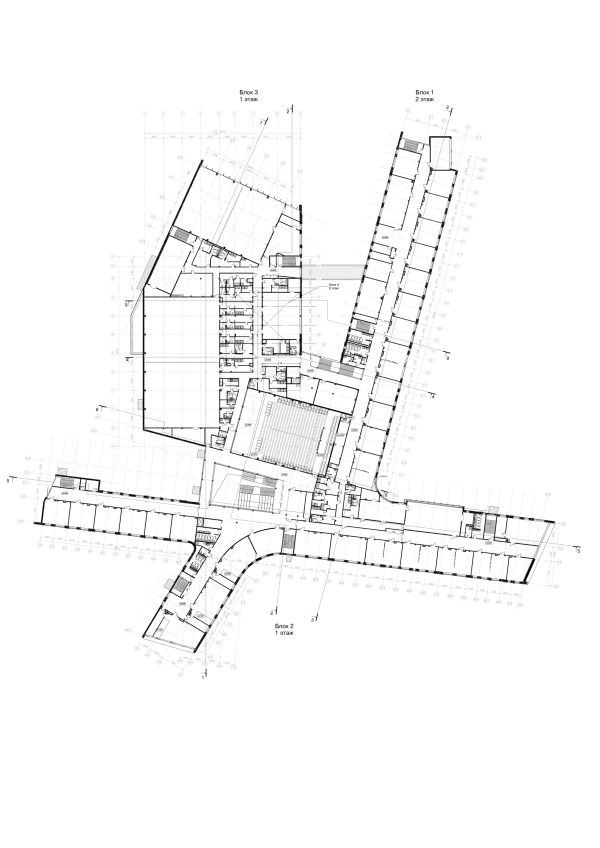 The school for 2,100 students in Troitsk. Plan of the 3rd floorCopyright: © ASADOV Architects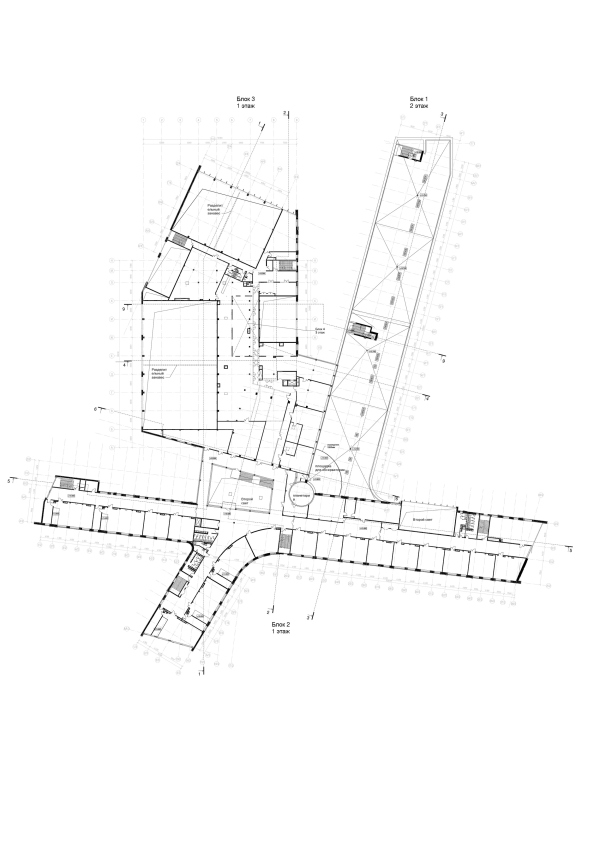 The school for 2,100 students in Troitsk. Plan of the 4th floorCopyright: © ASADOV ArchitectsAndrey Asadov shared that, among other things, his team was inspired by the projects of two Moscow schools – one in Letovo, and one in Khoroshevo-Mnevniki (“Khoroshkola” (which literally translates as “Goodschool” – translator’s note)). Both demonstrate innovative approach to forming an example educational environment. Both utilize the idea of a transformable space. In the Troitsk school, the architects also included a possibility for transformation: the grand auditorium and the atrium are built in such a way that they can be easily joined to form a giant public space due to the pull-out walls. So far, however, this proposal only exists on paper because the Troitsk school is a municipal contract with a limited budget. At the design stage, the architects closely interacted with the teachers and the principal of the future school – such practice, quite common in Europe, is still rare in this country, especially if we are talking about municipal construction. As a result, the school got such unusual options as the IT testing ground for robotic science lessons, a modern museum space, a greenhouse on the roof for growing vegetables, and even its own astronomy done for watching heavenly bodies. The school for 2,100 students in Troitsk.Copyright: © ASADOV ArchitectsThe facades are dominated by terra cotta hue that fits in very nicely with the natural surroundings. The glass makes the building’s image visually lighter, making it more transparent; the volume is also livened up by sunny-yellow and white inserts on the facades, and windows of different sizes. In addition to the yards, formed by the building’s wings, the school compound will get a large stadium with a football field and jogging trails, as well as playgrounds and sports fields classified according the age groups. There will also be a basketball and volleyball fields, and tables for table tennis. The school for 2,100 students in Troitsk.Copyright: © ASADOV ArchitectsIn the spring of this year, the project received a positive expert opinion, and now it is entering the active phase. It is planned to bring the school into operation in two years. The school in Troitsk will become one of the largest in the country. Two schools with a comparable capacity – more than 2,000 students – are to be found one in Nekrasovka, and the other in the Zilart district in Moscow. Schools with more than 1.5 thousand students are open, specifically, in Kommunarka, Vnukovsky and Krasnogorsk. It looks like a new trend, which, on the one hand, saves territorial resources, but, on the other, actually cancels the principle of walking accessibility. After all, the greater the capacity, the fewer schools you need. Therefore, students from remote areas will be forced to go to classes by public transportation. In Troitsk, for example, from the residential complex “Emerald” or the residential district of Solnechny, where there is no school, you will have to travel more than 30-40 minutes on foot to reach the new educational complex. However, this is a matter of decisions preceding the compilation of technical requirements, i.e. the parameters that architects, as a rule, get already in a predetermined form. As for the architectural part of the project, the authors really did everything they could to create a truly modern educational environment, making up, as much as possible, for the loss of some of the forest. The existing trees in the project are preserved not only in the school yards, but even in the stadium area. The ski track, which is so precious to the townspeople, is left intact. In addition, the architects hope that the school’s powerful infrastructure – the swimming pool, the library, the choreographic and gymnastics halls, the laboratories, and creative workshops – will be available to all of the residents. And the school will not turn into an enclave behind a high fence, but on the contrary, will become the new cultural and educational center of Troitsk. What comes next is just a question of the quality of implementation of the project. The architects intend to retain the right to designer supervision. The school for 2,100 students in Troitsk. A section viewCopyright: © ASADOV ArchitectsThe school for 2,100 students in Troitsk. A section viewCopyright: © ASADOV Architects |
|


